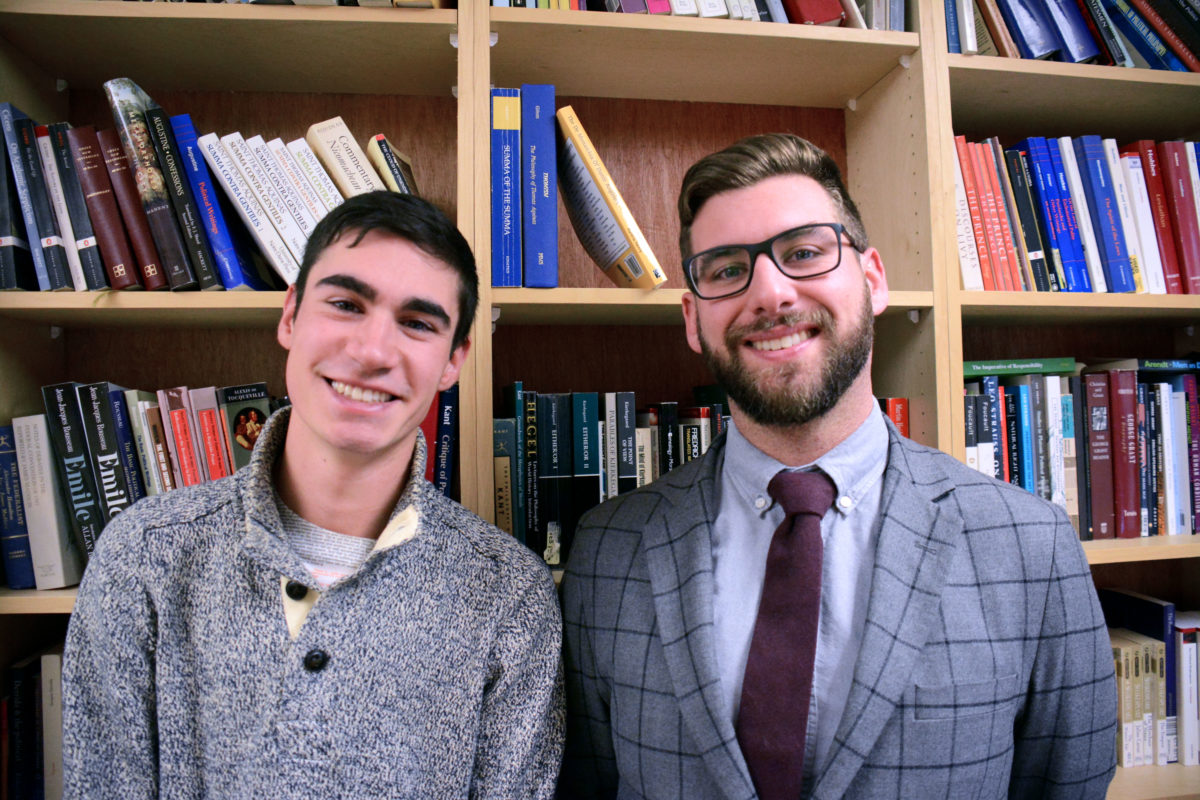St. Thomas University graduate Michael Pallotto will see his first scholarly article published this winter in collaboration with Catholic Studies professor Matt Dinan.
The article titled Joseph Ratzinger’s ‘Kierkegaardian Option’ in Introduction to Christianity examines the works of Joseph Ratzinger, now known as Pope Emeritus Benedict XVI, and his borrowing of ideas from Soren Kierkegaard, a 19th century Lutheran philosopher.
Pallotto graduated earlier this year with an honours in Great Books and a major in Catholic Studies, but this student-professor duo discussed collaborating while he was still in his third year at STU. In December 2017, the International Journal of Philosophy and Theology at the University of Notre Dame, put a call out for an article. That winter, they started writing.
While Dinan was teaching Pallotto’s Catholic Studies seminar he was also assigning him readings as his research assistant, which helped with creating this article.
“I was reading [Kierkegaard] as I was writing my final paper on Ratzinger so we started talking a lot more about the connections between the two,” said Pallotto. “And this sort of laid the groundwork for our ideas.”
“One of the things that Ratzinger seems to focus on with Kierkegaard is his emphasis on recovering the original questions and kind of existential conditions which made Christianity a live option for people,” said Dinan.
Ratzinger not only borrowed similar ideas from Kierkegaard but used direct phrases from some of his works. This discovery proved the connection between the two thinkers and the similarities of their religious views despite a difference in both era and denomination.
“What’s cool about Ratzinger is … instead of looking to the world to see what the relationship between the different Christian denominations might be, he goes back to the actual texts themselves, back to the gospels, back to the creed,” said Pallotto.
Ratzinger uses Kierkegaard’s arguments as a springboard to present his own.
“What [Ratzinger’s] provided is a ground for conversation across the different denominations,” said Pallotto.
The professor-student dynamic proved beneficial for the research process.
“I can stay up really late and then [Dinan] works in the early morning hours when I’m not awake,” said Pallotto.
Pallotto saw a reversal in their student-professor roles while working together.
“[Dinan] would send me stuff late at night and say ‘Hey, I need you to edit this’ or ‘write this section’. So here I am editing the work of the person who’s been editing all of my work for the last four years,” he said.
A small university like St. Thomas allows for this kind of collaboration between professors and students. This level of cooperation also allows for an additional experiential learning opportunity. Instead of just reading academic sources, students are encouraged to do more extensive research and participate in the academic world that might otherwise seem intimidating without the guidance of a mentor.
“It was the same thing with my professors at STU when I got into academia. If they were asked to do something they couldn’t do, they would just kind of send the invitation my way or invite me to collaborate and that sort of thing,” said Dinan.
“You have a student and you work with them for a number of years and by the end of it, if everything goes according to plan, you would hope to have somebody who you could engage with as a colleague instead of simply as a student.”

